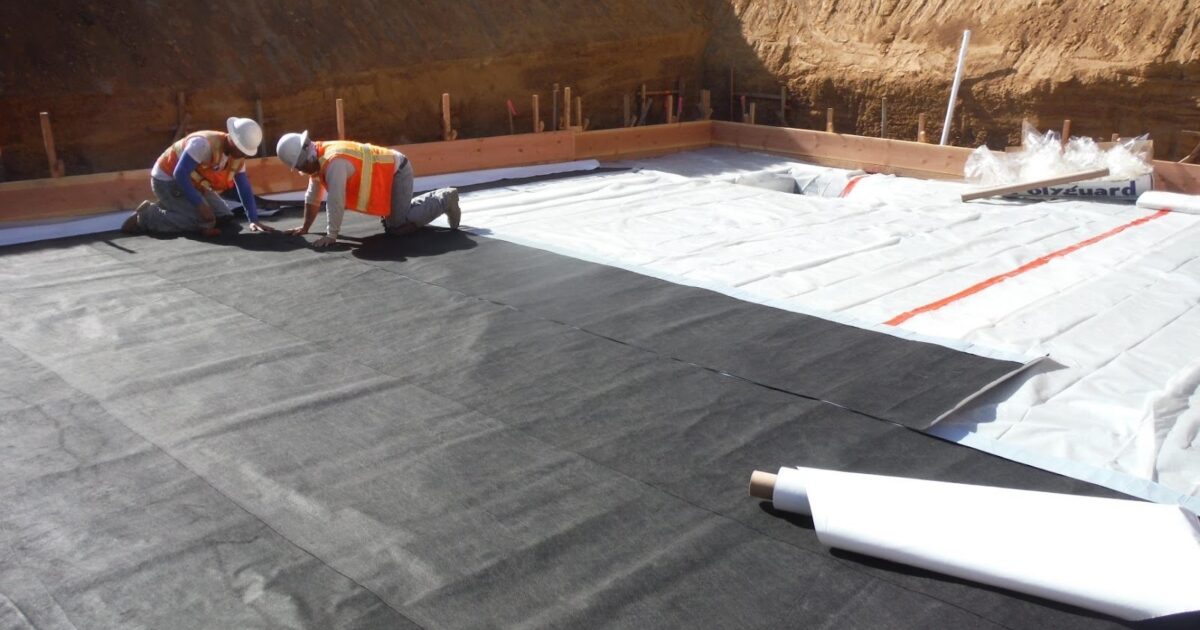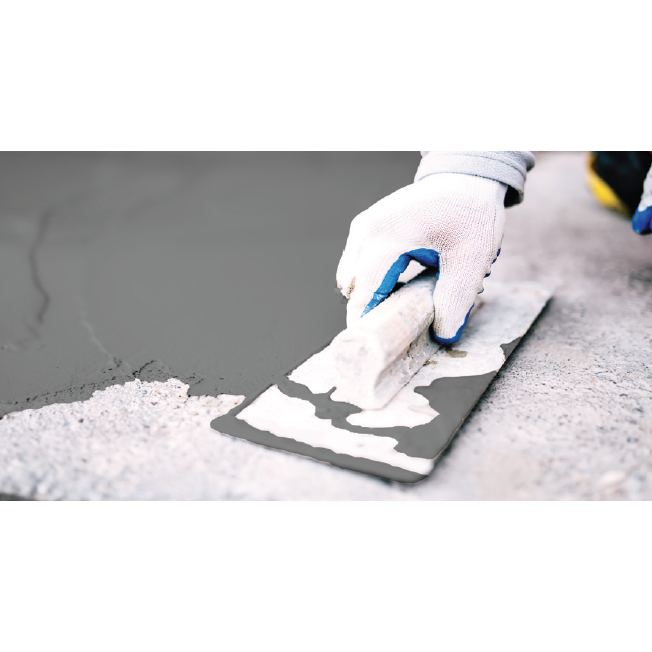Exactly How Waterproofing Works: A Detailed Consider Methods and Technologies
Waterproofing is necessary for safeguarding structures from moisture-related damage. It includes various strategies and innovations that produce barriers versus water intrusion. Typical methods, such as compacted clay, exist side-by-side with contemporary technologies like liquid-applied membrane layers. Comprehending the subtleties of these strategies is crucial for reliable application. The performance of any type of waterproofing remedy hinges not just on the methods used but additionally on recurring maintenance and assessment. What are the essential aspects that influence long-term efficiency?
Comprehending the Basics of Waterproofing
Waterproofing is a necessary procedure that protects structures from water breach, which can bring about substantial damages in time. This approach involves the application of different products and techniques created to develop a barrier versus wetness. The main goal is to stop water from penetrating surfaces, which can create deterioration, mold and mildew development, and architectural instability.Various variables affect the selection of waterproofing method, consisting of the type of framework, its place, and environmental problems. Recognizing the physics of water movement and the homes of different products is critical in picking a reliable waterproofing solution.Effective waterproofing not just safeguards structures but likewise improves their long life and honesty. Usually, it is integrated into the design phase of construction to assure thorough protection. As awareness of water-related issues grows, the importance of comprehending waterproofing basics becomes increasingly clear to architects, building contractors, and building owners alike.
Typical Waterproofing Approaches
Traditional waterproofing techniques have actually been used for centuries, relying upon time-tested strategies and products to guard structures from water damages. One of the earliest approaches entails the use of clay, which, when compacted, develops an all-natural barrier versus wetness. In addition, asphalt, a sticky, black material originated from oil, has actually been used for its waterproof residential or commercial properties, often put on roofs and foundations.Another technique includes the application of lime-based plasters, which supply a breathable layer that allows wetness to escape while preventing water ingress. Thatch roof, a conventional method still seen in some societies, provides excellent waterproofing because of its snugly packed straw layers.Moreover, the use of rock and brick has actually been prominent, as these materials are naturally resistant to water when effectively set up. In general, traditional waterproofing approaches emphasize the significance of selecting suitable products and construction practices to improve longevity against water intrusion.
Modern Waterproofing Technologies
Improvements in contemporary waterproofing innovations have reinvented the means structures are shielded from water damage. Innovative techniques such as liquid-applied membrane layers and sophisticated sealers have boosted the efficiency and flexibility of waterproofing options. These technologies enable for smooth application, reducing the risk of leaks and ensuring extensive insurance coverage over intricate surfaces.Moreover, the integration of clever innovations, such as moisture sensors and automated monitoring systems, makes it possible for real-time assessment of waterproofing efficiency. This positive technique assists in prompt maintenance and minimizes long-term repair service costs.Additionally, advancements in spray-applied layers use quick application and outstanding attachment, adjusting to different substratums while providing robust protection. Methods like polymer-modified systems even more boost flexibility and resilience, making them ideal for diverse environments. Generally, contemporary waterproofing modern technologies not only alleviate water intrusion yet also contribute to the long life and sustainability of frameworks, marking a considerable shift in the market.
Materials Made Use Of in Waterproofing
The effectiveness of waterproofing remedies greatly counts on the products made use of in their application. Numerous products are utilized to create barriers versus water access, each with unique buildings suited for various atmospheres. Commonly utilized products include membranes, layers, and sealants.Liquid-applied membranes, commonly made from polyurethane or acrylic, develop a smooth barrier that adjusts to complicated surface areas. Sheet membranes, usually created from rubber or polycarbonate, offer toughness and are suitable for bigger locations. Additionally, cementitious waterproofing products, composed of cementitious compounds, supply superb attachment and flexibility.Sealants made from silicone or polyurethane are essential for joints and seams, making certain thorough security. Innovative materials, such as geo-composite membrane layers, combine several functions, boosting performance. Generally, the option of waterproofing materials is essential in achieving resilient and efficient water resistance, tailored to certain task needs and ecological conditions.
Common Applications of Waterproofing
Waterproofing plays an important function in numerous industries, making sure the durability and honesty of frameworks. Typical applications consist of household services that protect homes, commercial infrastructure that safeguards organizations, and industrial setups that call for robust defense against dampness. Recognizing these applications highlights the value of waterproofing in keeping both safety and security and functionality throughout different settings.
Residential Waterproofing Solutions
Many home owners deal with obstacles with moisture intrusion, making effective domestic waterproofing remedies crucial. Various approaches exist to resolve this problem, consisting of exterior and interior waterproofing systems. Interior services usually include the application of sealants and finishings to cellar walls, which help avoid water seepage. Exterior techniques normally include the installment of water drainage systems and water-proof membranes that draw away water far from the foundation.Additionally, drytech waterproofing property owners might take into consideration sump pumps to remove water build-up and dehumidifiers to control moisture levels. Appropriate grading and the usage of gutters also play a vital function in taking care of water flow around the home. By executing these strategies, homeowners can substantially minimize the threat of water damages and mold and mildew growth, making sure a completely dry and risk-free living atmosphere.

Business Facilities Security
Reliable waterproofing remedies play a crucial duty in the defense of industrial infrastructure. Sump pump discharge drainage Omaha. These strategies are vital for guarding buildings, car parking frameworks, and bridges from water damages, which can endanger architectural integrity and cause costly repairs. Usual applications consist of the installment of membranes, finishings, and sealants that create obstacles versus moisture infiltration. Areas such as basements, roof coverings, and exterior wall surfaces are frequently prioritized to assure durability and durability. Additionally, waterproofing systems can improve energy effectiveness by protecting against water-related issues that may lead to mold and mildew development and wear and tear. By applying durable waterproofing measures, homeowner can protect their investments and keep operational efficiency, eventually adding to the total sustainability of business centers
Industrial Applications Review
While various fields encounter special difficulties, the need for dependable waterproofing options continues to be a consistent in commercial applications. Industries such as manufacturing, construction, and energy commonly encounter settings where moisture exposure can endanger structural honesty and functional effectiveness. In manufacturing facilities, waterproofing is important for securing equipment and products from water damages. In building, it safeguards structures and cellars versus groundwater infiltration. The power market counts on waterproofing for the defense of devices in hydroelectric plants and overseas structures. Furthermore, food handling sectors utilize waterproofing to guarantee hygiene and compliance with safety and security criteria. In general, efficient waterproofing services are essential for boosting durability, security, and performance across numerous commercial settings.
Upkeep and Long Life of Waterproofing Solutions
Although waterproofing solutions are made to provide long-term protection against moisture breach, regular maintenance is vital to ensure their performance and long life - Yard drainage Omaha. Routine inspections play a considerable role in identifying prospective issues such as splits, peeling, or indications of water damage. Resolving these issues immediately can avoid additional wear and tear and costly repairs.Additionally, cleaning up the surface area of waterproofed locations helps eliminate dirt and debris that might endanger the honesty of the waterproofing obstacle. It's additionally suggested to reapply safety finishings or sealants as recommended by makers to keep perfect efficiency. Environmental elements, such as UV direct exposure and extreme weather, can impact site web the life expectancy of waterproofing materials, making regular assessment essential
Often Asked Questions
Can Waterproofing Be Applied in Winter?
The question of using waterproofing in winter raises problems about bond and curing. Several products may not carry out at their finest in reduced weblink temperatures, necessitating careful selection and consideration of certain standards for reliable application.
For How Long Does Waterproofing Commonly Last?
The duration of waterproofing performance varies based upon materials and environmental factors. Usually, it can last from five to 10 years, yet routine upkeep and evaluations are important to guarantee peak efficiency and durability.
Is Do It Yourself Waterproofing Effective and Safe?
The performance and safety and security of do it yourself waterproofing rely on numerous variables, including worldly top quality and application method. While some individuals achieve satisfying results, others might experience issues that jeopardize long-lasting protection and structural honesty.
What Are the Indicators of Failing Waterproofing?
Indications of falling short waterproofing include noticeable water spots, peeling paint, mold and mildew growth, musty smells, and dampness in walls or ceilings - Sump pump discharge drainage Omaha. These signs recommend jeopardized barriers, requiring timely examination and possible removal to avoid more damages
Just how Do I Choose the Right Waterproofing Specialist?
